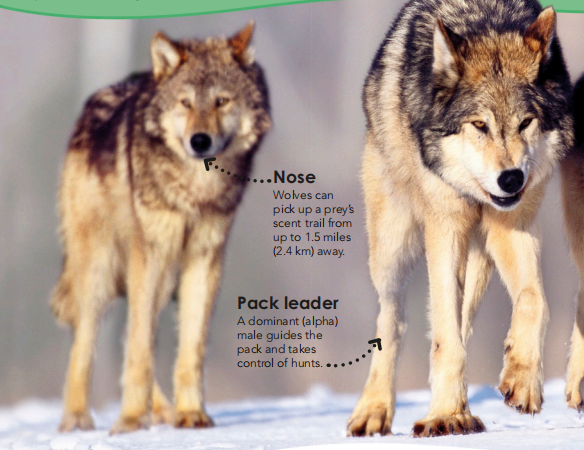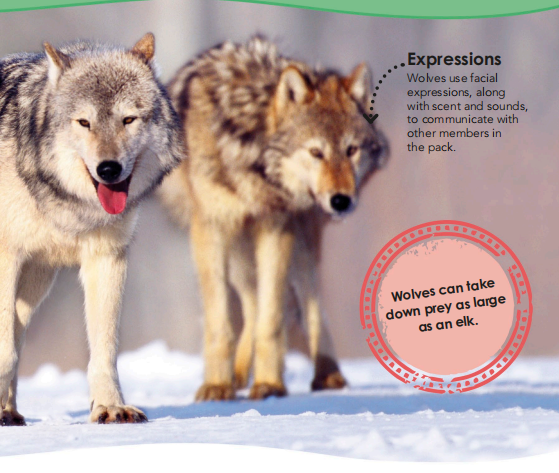A wolf is a skillful predator. It has sharp teeth, a strong bite, and is incredibly cunning. But it has another deadly weapon: teamwork. Wolves work together in packs to hunt down large prey.
Why Do Wolves Live in Packs?
1. Nose Knows Best
Wolves possess an extraordinary sense of smell, allowing them to pick up a prey's scent trail from an impressive distance of up to 1.5 miles (2.4 km). This remarkable olfactory ability is a crucial tool for their hunting success.
2. Pack Dynamics
Every successful wolf pack has a leader, often referred to as the alpha male. This dominant individual guides the pack and takes control of the hunt. The pack's cohesion relies on a social hierarchy where each member plays a specific role, showcasing the importance of teamwork in their predatory pursuits.
3. Expressions Speak Louder than Words
Communication within a wolf pack is not limited to vocalizations. Wolves use facial expressions, along with scent and sounds, to convey messages to their fellow pack members. This non-verbal communication contributes to the coordination essential for effective hunting and survival.
How many wolves are in a wolf pack?
Packs that hunt big elk can have 15–20 members.
What happens when two packs meet?
Usually different packs stay away from each other. But if they meet up they may fight.
Why do wolves howl at the sky?
Wolves howl to bring members of the pack together and to scare off other packs.
Conclusion
Wolves, with their keen senses, social structures, and mesmerizing howls, showcase the beauty and complexity of the natural world.
As we unravel the mysteries behind these incredible predators, it becomes clear that their strength lies not only in their physical prowess but also in the power of unity and communication within the pack.






Terima kasih kerana singgah ke Blog Sii Nurul. Jika ada sebarang pertanyaan, komen, penambahbaikan, cadangan mahupun pandangan. Boleh tinggalkan jejak anda.